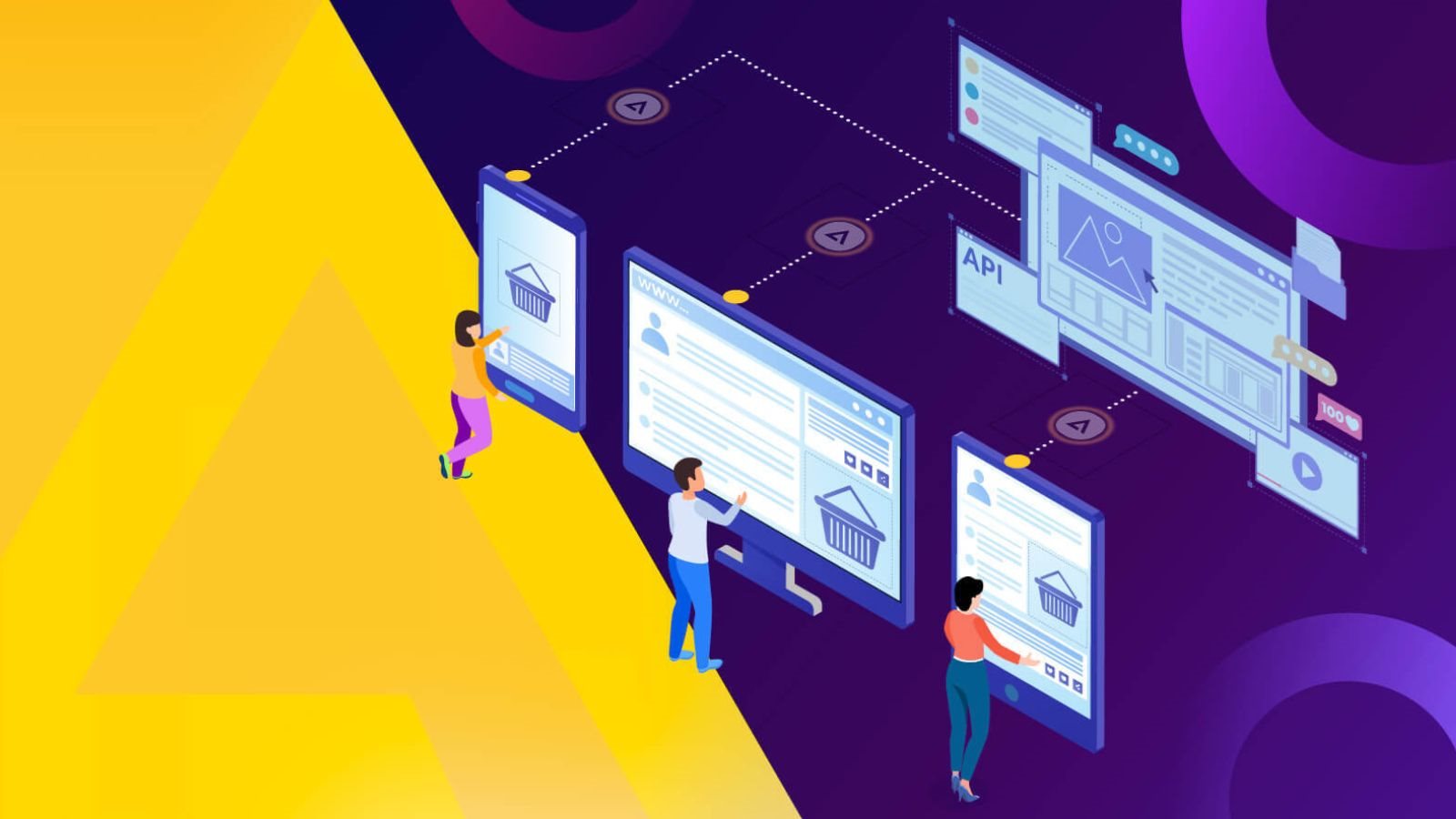Content marketing has been around as long as demand and supply exist. The arrival of 'Web 2.0' helped content marketing flourish in unforeseen and innovative ways. Traditional Content Management Systems (CMS) rose to the occasion to help marketers win over consumers with content as a Service for marketing.
However, as smartphones and tablets grew in popularity, the audience moved away from the desktop platform, and these marketers realized the 'need' to engage their audience strategically across multiple platforms. Unfortunately, traditional CMSs have proven too technologically rigid and cost-inefficient for omnichannel content marketing. Thus, the next step in CMS evolution- the API-based Headless CMS, was born.
But what is an API? How does it empower a CMS for more productivity than a Traditional CMS? What does it mean for content marketing? We shall answer those queries in the following sections.
What are APIs?
You may have come across the phrase API-before. For the uninitiated, API is short for an Application Programming Interface, a miniature programming module coded with a particular set of tasks in mind. APIs are used by developers when they want their software service to interact with an external service. Developers only need simple commands to augment their application's features and functions using APIs.
The primary role of an API in a Headless CMS is managing the presentation side of the data, i.e., the front end. However, that is not its sole purpose. APIs also give developers many technological benefits and optimize content marketing for brands.
Introducing the Headless CMS
In simple terms, a Headless CMS is one that de-links the backend of the CMS from its front end. The logic behind it is to present a more adaptable CMS that seamlessly adapts to a platform-native frontend. The Headless CMSs API-based architecture is responsible for 'piggybacking' the backend regardless of the complexity of its logic.
The coinage 'Headless' rose from the concept that this type of CMS does not have a definite frontend; instead, it leverages its API-based delivery system to responsively deliver content to multiple platforms (which means servicing multiple frontends, too) flexibly. Most businesses custom configure APIs to perform functions specific to their business requirement. In the context of a CMS, an API is tasked with fetching data, delivering data, and displaying that data in a native-responsive way to consumers, regardless of the platform they use to access the CMS. Let's take a look at how that works in detail.
How does an API-based architecture augment a Headless CMS?
Decoupling the front end from the backend is possible only with the help of an API-based architecture. When the content is created, the editor is responsible for formatting and storing it. At the same time, the developer is responsible for the front end for the same, for every channel where it's delivered. Content editors and managers enjoy better control over content page management, relationships, and the repository.
The API-based architecture introduces automation into this process flow. Once the protocols are in motion, every time new content is introduced by editors/managers.
A REST API takes over the distribution part. It delivers it to any platform calling on the API to provide the content.
The developer is looped back in only when there is a need to alter the front end, expand the repository, or change the API configuration. Pure, Headless CMSs are created with API integration at the center of it. Hence, they elevate the Developer Experience, Editor Experience (EX), and of course, the User Experience (UX).
Uses cases where a Headless CMS outperforms a Traditional CMS
The critical difference between how Headless CMS works compared to a Traditional CMS is how data is created, stored, and delivered. The primary issue with Traditional CMSs is that they can cater to anyone channel or platform for marketing and present a quite barebones WYSIWYG. The content creation, storage, management, and deliverance are wrapped together and placed in the backend, while the front end is separately created with the targeted platform UI in mind.
A Headless CMS addresses these issues with a 'Content-first' approach. As the previous section elucidates, the API-based architecture of a Headless CMS is built with the intention of flexible, hassle-free content creation, management, and distribution. In this regard, a Headless CMS does not benefit content creators and marketers alone; there are two other crucial use cases where Headless CMSs offer benefits.
Developer benefits
There are advantages that developers enjoy when they shift from Traditional CMSs to Headless CMSs:
- Developers do not need to adhere to any singular technology stack. They can choose whichever stack is more manageable for them to develop and maintain or whichever framework offers the most efficiency, thus, using the latest trends in web development in any language of their preference.
- Efficient development is facilitated in a Headless CMS with the amount of coding developers need to create a system that categorizes and delivers content across multiple platforms flawlessly. Time consumption is also a factor here, so developers will prefer the alternative that yields more results with less development time.
Editor benefits
Content managers and editors also enjoy productive perks with a Headless CMS:
- With the help of a Headless CMS, editors can format, filter & categorize better. Unlike a Traditional CMS, they do not have to worry about content presentation for every marketing channel separately.
- The tightly-woven backend and frontend of Traditional CMS led content editors to be more dependent on the development personnel. Headless CMSs eliminate such dependencies making it easier to publish content and scale.
How does Headless CMS innovate omnichannel marketing?
On a global scale, 92% of brand marketers view content as a crucial marketing asset. At least 50% of brand marketers actively strategize their marketing content around new customers- which means omnichannel marketing presence. For competitive omnichannel content marketing, brands today need a CMS that grants focus on the actual content and its strategic distribution. At the same time, the technological configuration remains a one-and-done deal. Headless CMSs outdo expectations and afford more competitive advantages by making it easier to update your content marketing strategy, front end, and scale. Here's how:
Lesser troubleshooting worries
Headless CMS services are optimized more regularly by providers than Traditional CMS systems for service improvement. Integrating new technologies or switching technology stacks is relatively easy for the developers.
Better omnichannel content management
A Headless CMS can grant better content management with easier integration to emerging channels or platforms. Imagine distributing the same content that mobile users are reading to users on wearable tech- The possibilities are limitless!
Faster deliveries
Lesser dependency on developers means content publishers and editors do not have to await the developer's intervention for making content live; marketers do not have to entertain delays as developers can remote access a Headless CMS from the Cloud to offer immediate servicing. Also, an API-based architecture helps your CMS service millions of users without affecting your CMS or database. Your users enjoy lag-free, seamlessly native-responsive content at any given time.
Scalability
Cloud integration and technological freedoms allow your CMS to expand its service to newer platforms, imbibe newer marketing trends, and grow in service size. Considering how much brands had to pay to grow their marketing every time they targeted a new marketing channel with a Traditional CMS, this is a welcomed change.
More economical, better ROI
A Headless CMS can ensure you get more out of content marketing with less financial input. A monolithic, Traditional CMS costs time and money to develop and maintain while yielding marketing potential over a singular channel. But, cloud-based, API-based Headless CMS lowers your cost of storage and backend operations. The Cloud integration of the Headless CMS is also accessible to your team from anywhere. Fast service for all equals more consumers and, of course, better ROI than what a Traditional CMS can promise you. Lastly, but most importantly, you can achieve more with a small, dedicated team and a Headless CMS than with a large one and a Traditional CMS.
So, you can target a more significant market demographic and grant them Content as a Service over any platform. Thus, content marketing is less myopic and more omnipresent with an API-driven Headless CMS at your side.



